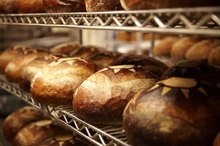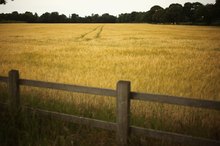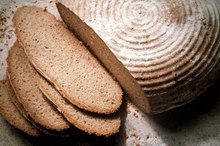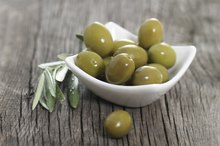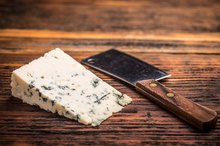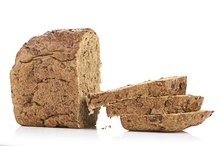Mold on Wheat Bread vs. White Bread
When it comes to wheat versus white bread, many people might make the hasty conclusion that white bread would mold more quickly, because of its refined state and simple sugars 3. Others might say that the wheat bread, being healthier and containing fewer preservatives, would mold first 3. Both of these conclusions contain some truth when it comes to mold growth, but there are many factors involved, as well as types of bread, so it is impossible to solely compare white and wheat without involving all of these other factors 3.
Considerations
Most people today do not make their own bread, but purchase it from a grocer or baker 3. Therefore, it is subject to a number of processes that the consumer may not even know about. The main factors that will affect the rate of mold growth on your bread are the ingredients, processing conditions, storage conditions, and handling of the bread by all parties involved 3.
Preservatives
What Signs Should You Look for When Mold Is Forming on Bread?
Learn More
Most commercial loaves on the market today contain calcium propionate to inhibit the growth of fungi 1. An organic salt formed by the reaction of calcium hydroxide with propionic acid, calcium propionate occurs in a crystalline or powder form 1. This, along with other preservatives, extends the shelf life of bread, otherwise it would likely be moldy by the time it reached the store 3. So preservatives can play a big role in how quickly bread molds, whether white or wheat 3.
Water Activity
Water activity, or the moisture content of bread, is another factor that directly affects the rate of mold growth 3. To measure the water activity of bread, you can put a sample in an air-tight container and measure the amount of water that vaporizes from the product 3. With water being 1 and bone-dry 0, bread comes in with a water activity of about .95 3. Molds generally grow until the water activity drops below .81. The pH of bread, slightly acidic at 5.3 to 5.8, helps to counteract this growth, usually with the help of added preservatives 3.
Types of Mold
List of Wheat-Free Foods
Learn More
Four types of mold that grow on bread are penicillium, rhizopus nigricans, aspergillus, and mucon 3. These molds come in an array of colors, from green, gray and white to black. Both white and wheat bread can grow all of these types of mold 3.
Avoiding Mold
Whether white or wheat bread, to slow mold growth, you should toast, refrigerate or freeze your bread 3. Toasting bread will reduce its water activity 3. Refrigeration and freezing will slow the chemical reactions causing mold to grow. If you buy fresh bread from a bakery, it is likely to have little or no preservatives added, so it is important to buy only what you will use immediately or freeze the extra for later use 3.
Related Articles
References
- Calcium Propionate
- MadSci Network
- Bread Mold
- Borchers AT, Chang C, Eric gershwin M. Mold and Human Health: a Reality Check. Clin Rev Allergy Immunol. 2017;52(3):305-322. doi:10.1007/s12016-017-8601-z
- Balmes JR. Chapter 107. Molds. In: Olson KR. eds. Poisoning & Drug Overdose, 6e, New York, NY: McGraw-Hill; 2012.
- Bozek A, Pyrkosz K. Immunotherapy of mold allergy: A review. Hum Vaccin Immunother. 2017;13(10):2397-2401. . doi:10.1080/21645515.2017.1314404
- Cipriani F, Calamelli E, Ricci G. Allergen Avoidance in Allergic Asthma. Front Pediatr. 2017;5:103. doi:10.3389/fped.2017.00103
- Chinoy B, Yee E, Bahna SL. Skin testing versus radioallergosorbent testing for indoor allergens. Clin Mol Allergy. 2005; 3:4. Clinic Rev Allerg Immunol (2017) 52:305–322. doi:10.1186/1476-7961-3-4
- Edmondson, DA. Allergy and “toxic mold syndrome.” Ann Allergy Asthma Immunol. 2005 Feb;94(2):234-9. doi:10.1016/S1081-1206(10)61301-4Get
- Coop, CA. Immunotherapy for Mold Allergy. Clinic Rev Allerg Immunol (2014) 47:289–298. doi:10.1007/s12016-013-8389-4
- Centers for Disease Control & Prevention. Mold Prevention Strategies and Possible Health Effects in the Aftermath of Hurricanes and Major Floods. Published June 9, 2006.
Writer Bio
Lynn Holmgren is a freelance writer based in York, Penn. She has published articles about writing, international exchange, travel and outdoor recreation in ShowcasePA! magazine and Bootsnall.com. Homgren also enjoys writing and reviewing short stories on her blog Long Story Short.
